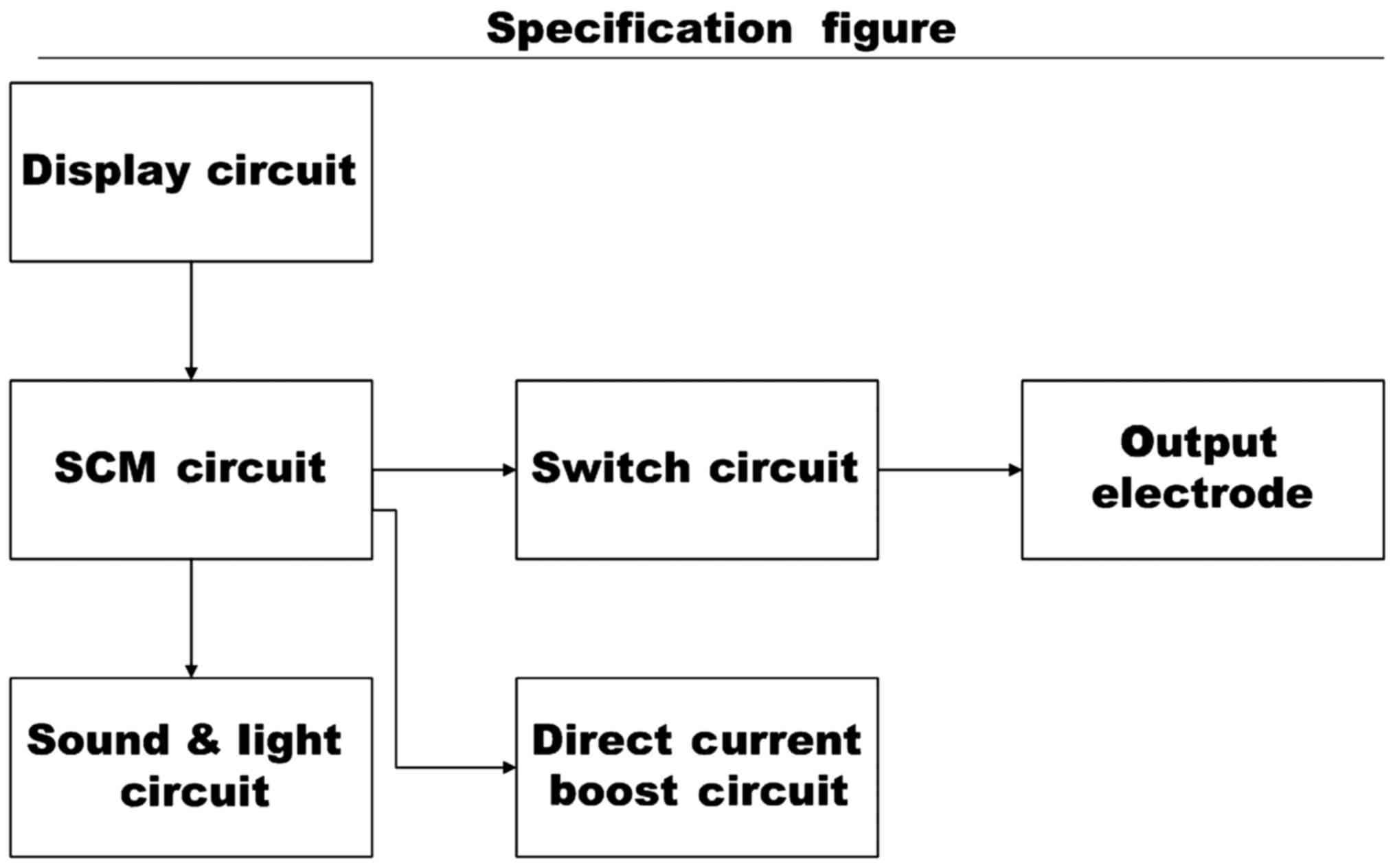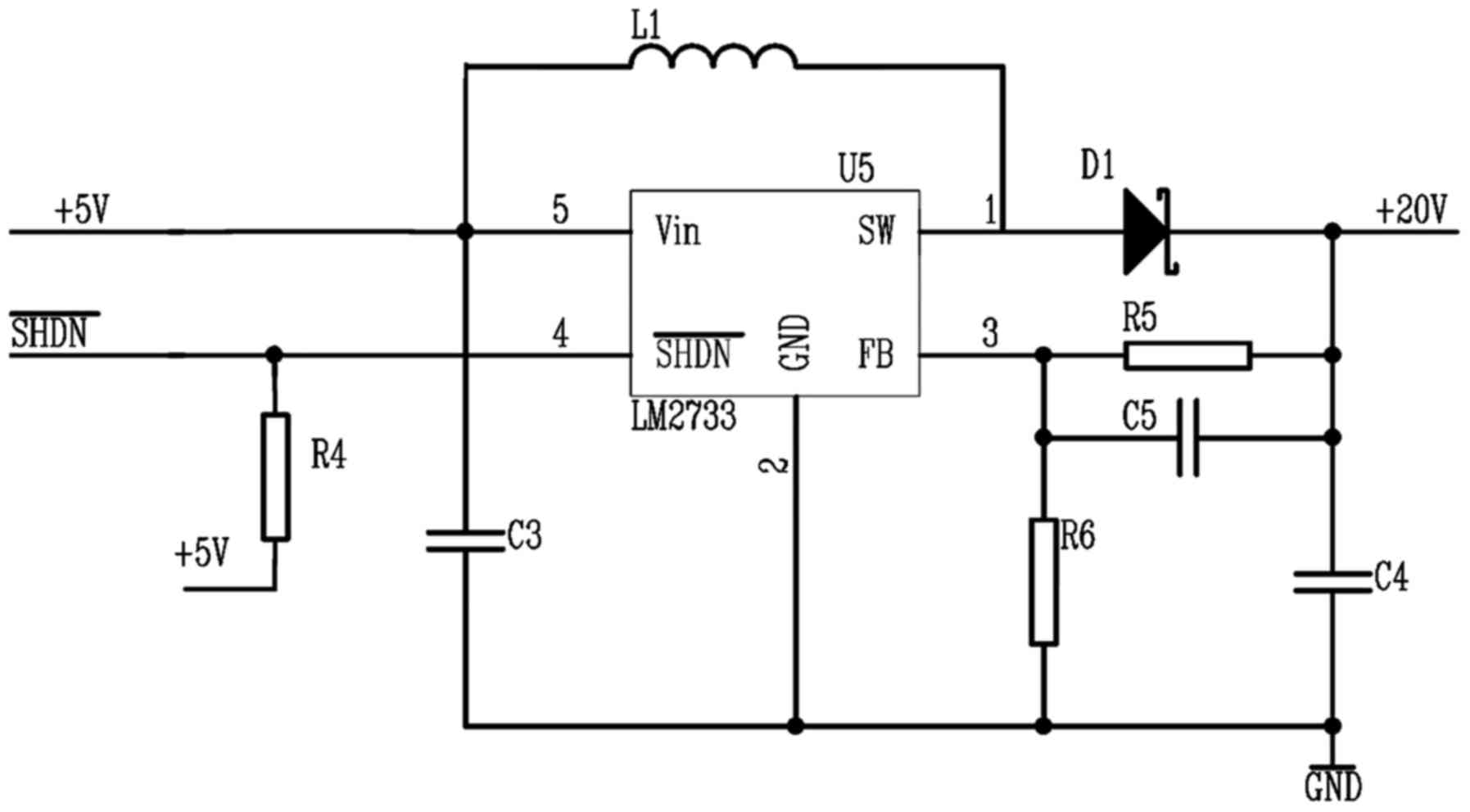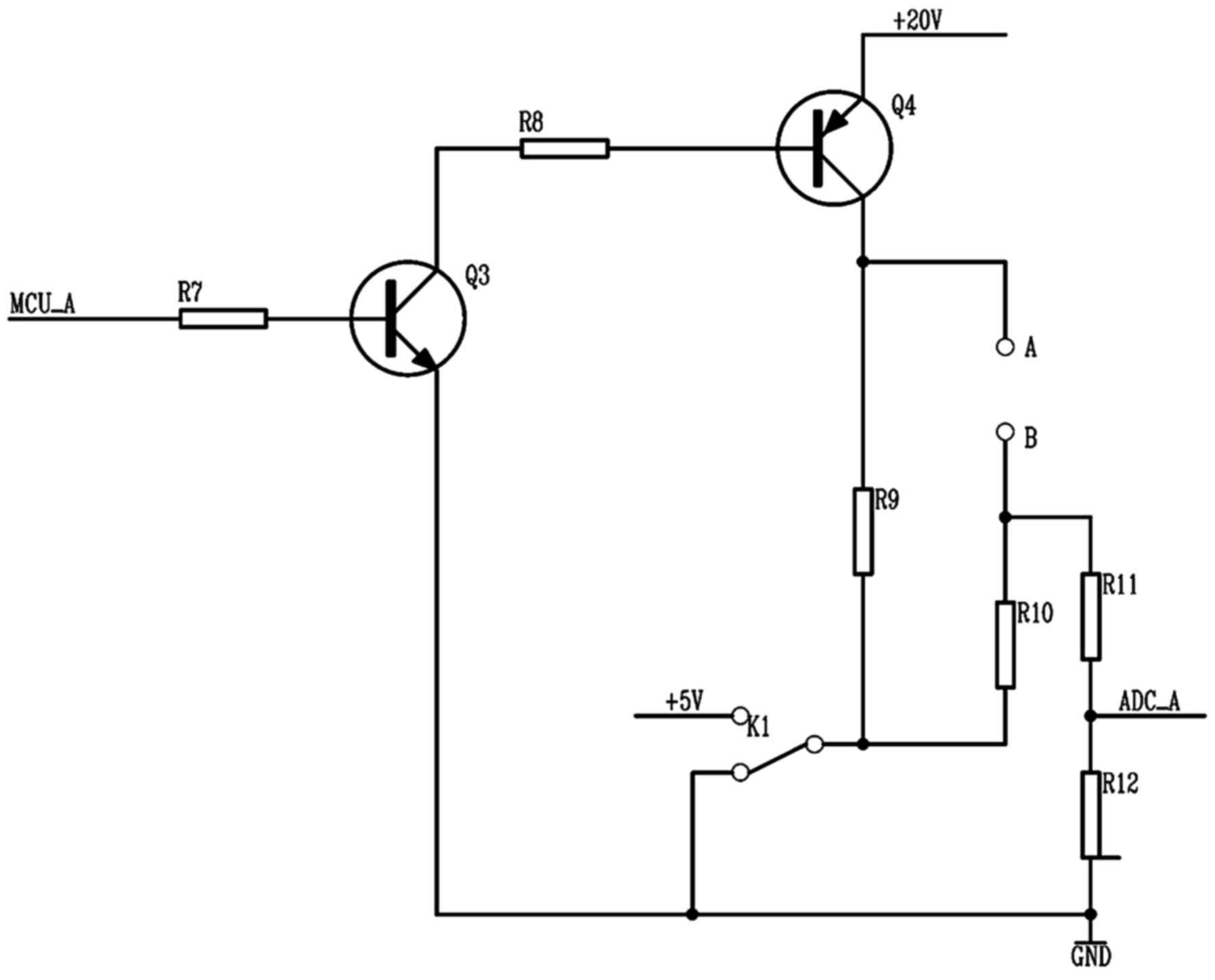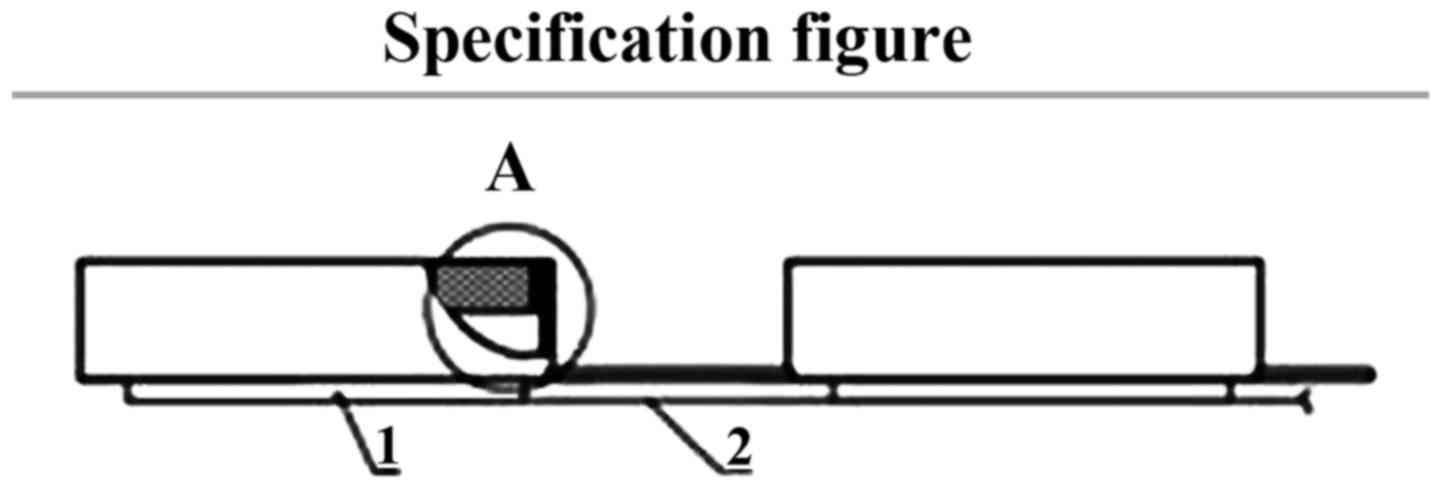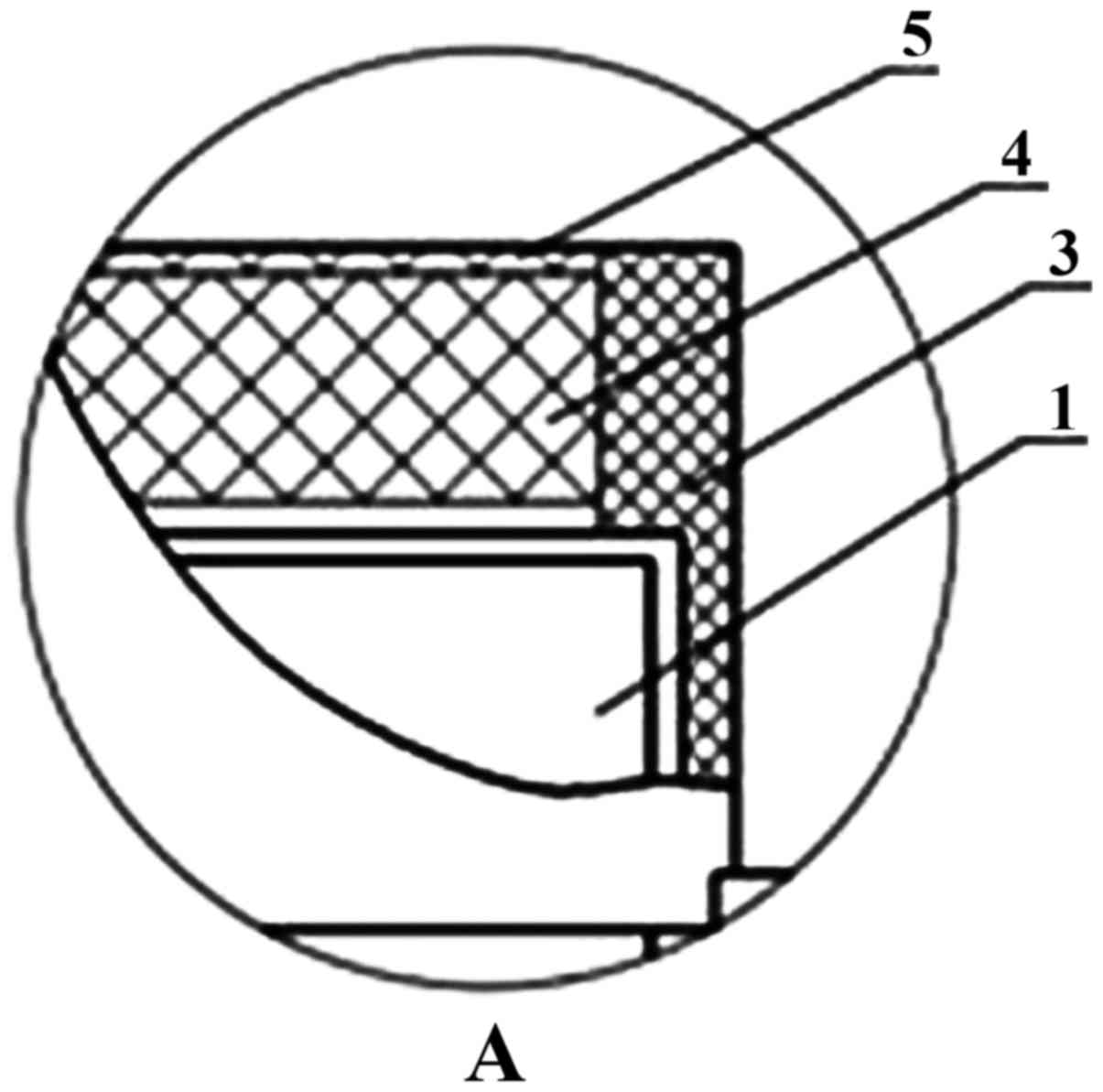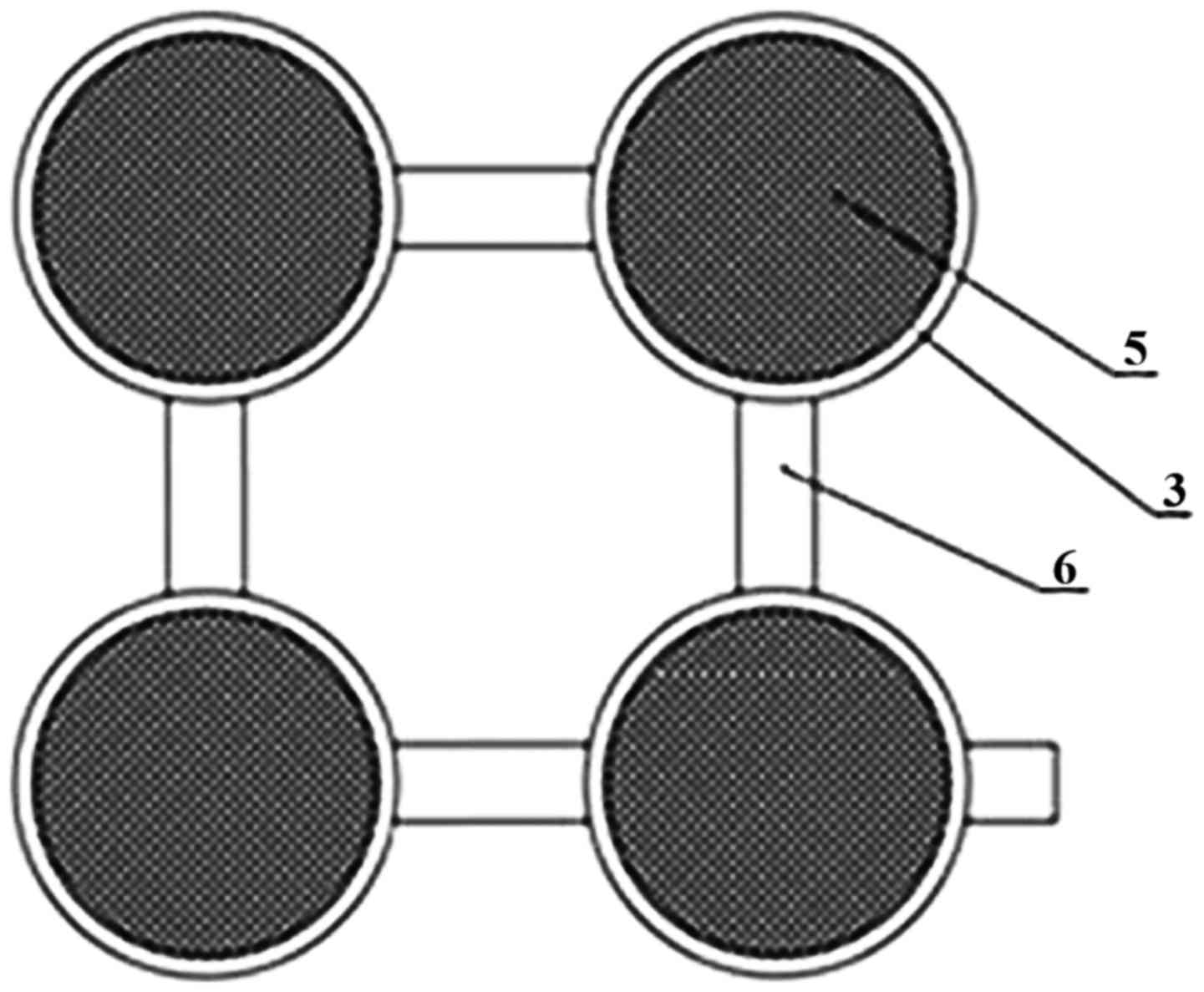Design and implementation of fast allergy skin test detector for traditional Chinese medicine injections
- Authors:
- Published online on: March 10, 2017 https://doi.org/10.3892/etm.2017.4221
- Pages: 1884-1890
-
Copyright: © Xiao et al. This is an open access article distributed under the terms of Creative Commons Attribution License.
Abstract
Introduction
Traditional Chinese medicine (TCM) injections are prepared from active substances extracted from TCMs and other natural medicines to establish novel scientific and technological methods, based on TCM hypotheses and experiences (1). The injections consist of various sterile preparations for which the indications are described by TCM terminology or TCM terminology combined with associated Western medicine terminology (2). TCM injections are Chinese characteristic modernized TCM preparations, that are cost-effective, efficient, reliable and of high bioavailability. Thus, these injections are widely used in the clinic and are considered indispensable. In comparison with Western medicines, TCM injections are usually composed of various TCM components, and enter directly into the patient's bloodstream (3,4). Thus, the risk of TCM injections is higher than that of oral medication and adverse reactions including allergy to TCM injections, or even death events due to severe adverse reactions have been recently reported (5). The skin test of TCM injections prior to use is considered a feasible method in the exclusion of the most susceptible patients and to ensure the safety of these patients. Numerous commercially available allergy skin test detectors, however, have a simple structure and limited applications. Thus, they are unable to be used in the allergy test of TCM injections (6). Therefore, technology is required to provide a fast allergy skin test detector for TCM injections whereby a patient would be able to determine his/her allergy to TCM injections through a skin test.
In the present study, a device was designed to provide a fast allergy skin test detector for TCM injections that could be applied to drugs of a single component or complex components. Consequently, the patient would be able to determine his/her allergy to TCM injections via a skin test, and avoid the occurrence of adverse reactions to TCM injections.
Materials and methods
System design and working principles
The fast allergy skin test detector for TCM injections consists of the mainframe of the detector, skin test electrode, and the percutaneous penetration device for drug solution (7).
The mainframe of the detector
Key points of the structureThe fast allergy skin test detector for TCM injections consisted of a single chip microcontroller (SCM) circuit, display circuit, sound and light alarm circuit, switch circuit, output electrode, and direct-current boost circuit (Figs. 1–3). The SCM circuit was bidirectionally connected to the switch circuit and the two output terminals of the SCM circuit were connected to the display circuit and the sound and light alarm circuit, respectively, while the other terminal of the SCM circuit was connected to the corresponding input terminal of the direct-current boost circuit. The output terminal of the switch circuit was connected to the output electrode, and the output terminal of the direct-current boost circuit was connected to the corresponding power supply terminal of the switch circuit.
Working principlesDirect-constant power supply (+5 V) was superposed to a high-amplitude pulse. If the drug was composed of a single component, the pulse on the output electrode was a high-amplitude pulse. By contrast, if the drug was composed of complex components, the pulse on the output electrode was the superposition of a high-amplitude pulse and +5 V.
Workflow of the fast allergy skin test detector for TCM injections (8)As shown in Fig. 4, a high SCM U1 output led to a low-level output through MCU_A to control the switch of Q3. The switch of Q4, which was controlled by the switch of Q3, produced a pulse of 20 V, which acted on the skin and accelerated the skin adsorption of the drug. The feedback voltage produced in R12 was within the identifiable range of SCM U1. If the contact between output electrode A or B and the skin was poor (the feedback voltage was <0.1 V), SCM U1 detected this voltage through ADC_A and gave an alarm through the sound and light alarm circuit.
If switch K1 was in ground connection, and a single pulse of 20-V amplitude was detected at output electrodes A and B, it could be used to detect the allergy reactions of the drug of a single component. If the switch K1 was connected to +5 V, and the superposition of a pulse of 20-V amplitude and +5 V on output electrodes A and B, it could be used to detect the allergy reactions of drugs of complex components.
When the test began, SCM U1 began to time. SCM U1 monitored the sound and light alarm circuit to give an alarm when the predefined time was reached, the digital tube showed ‘END’, and the buzzer FM buzzed to notify the medical staff to check the allergy. Digital tubes U2-U4 were used to display time, current working status, or error alarm.
If SCM U1 detected a poor contact between the output electrode and the skin, it would control the sound and light alarm circuit to sound an alarm, and the digital tube showed ‘EEE’.
Skin test electrode (9)According to the application characteristics of the TCM injections, the device incorporated four detection electrode and corresponding percutaneous penetration devices for drug solution, and increased the compatibility of control types for TCM injections, i.e., 10% (or 5%) glucose injection and normal saline injection were used as the solution and blank control, respectively, in the skin test.
The device used the skin test electrodes with different shapes according to the width of the patient's arm. A 4-electrode ring was set in a square, whereas a 4-electrode ring was set in a single line, to perform a test and control analysis.
Percutaneous penetration device for drug solution (10)The percutaneous penetration device for the drug solution used a nano-sponge patch as the material that adsorbed the skin test solution. Based on the physical adsorption, which was dependent on the nano-capillary pore structure in the sponge, this device spontaneously and completely adsorbed the components in the TCM injection, and released the adsorbed components after slight pressure.
The percutaneous penetration device for the drug solution was covered by flexible liposome on the nano-sponge patch, and the liposome improved the permeation of drugs by the skin. As TCM injections were characteristic of many complex components, which had a different skin permeation rate, this utility model adsorbed various components, and enabled these components to permeate completely into the skin tissue. Liposome coverage membrane had a significant pro-permeation effect as the carrier of percutaneous administration, especially for the macromolecular drugs, such as polypeptides and proteins. Flexible liposome had good deformability on pressure, as it could permeate intact skin, and achieve effective drug concentration even with a low dose of the drug. Consequently, the skin was able to completely adsorb the tested TCM injections.
The permeation device was used for the drug solution with different shapes and skin test electrodes, and was adjusted to the different arm width of the test subjects.
A nano-sponge patch was used as the material that adsorbed the skin test solution, thus it completely adsorbed and released all the adsorbed TCM injection components.
Flexible liposome coverage was utilized, which achieved an effective drug concentration even with a low dose of the drug. Thus, the skin was able to completely adsorb the tested TCM injections.
Detailed description of the fast allergy skin test detector for TCM injections (11)The percutaneous permeation device consisted of an electrode 1 that was connected to the electronic pulse-transmitting device through a connection wire 2 and the drug solution permeation device that was mounted on electrode 1 (Figs. 5 and 6). The electronic pulse transmitter device was either a direct constant electronic pulse transmitter device or an ultrasonic-transmitting device. The drug solution permeation device consisted of electrode collar 3 and connection band 6, which fixed electrode collar 3 (Fig. 7). Nano-sponge patch 4 was mounted on electrode collar 3, and liposome membrane 5 was covered by nano-sponge patch 4. The outer surface of nano-sponge patch 4 was inundated in liquid liposome to form liposome membrane 5. An embodiment of this device is shown in Fig. 7, with four electrode collars arranged in the form of a square. Another embodiment of this device is shown in Fig. 8, with four electrode collars arranged in a line. The fixed electrode collar of this device had a diameter of 0.8–1.2 mm and a height of 4.5–5.5 mm. The thickness of the nano-sponge patch 4 was 2.0–3.5 mm and that of the liposome membrane 5 was 0.1–0.5 mm. According to the characteristics of TCM injections, this device used >3 (usually 4) detection electrodes and corresponding drug solution permeation devices, which increased the compatibility of the control types for TCM injections, i.e., the skin test used 10% (or 5%) glucose solution and normal saline as the solution and blank control solution, respectively.
Drug solution permeation devices with different shapes and compatible with the skin test electrode based on the patient's arm width were employed.
Nano-sponge patch 4 was used as the material that adsorbed the skin test solution. Based on the physical adsorption, this device spontaneously and completely adsorbed the components in the TCM injection, and released the adsorbed components after slight pressure.
The permeation device used flexible liposome membrane 5. Liposome formulation improved the drug permeability of the skin. TCM injections were characterized by multiple components, which were complex and had different permeability, thus each component was adsorbed and permeated into the skin tissues. As the percutaneous administration carrier, liposome membrane 5 had a significant pro-permeation effect, especially for macromolecular drugs such as peptides and proteins. Flexible liposome had a strong compressional deformation ability, as it permeated the whole skin, and achieved effective drug concentration even with low-administration dose of the drug. Thus, the tested TCM injections was completely adsorbed by the skin.
The nano-sponge was used as the material that adsorbed the skin test solution. The nano-sponge completely adsorbed and released the adsorbed TCM injection components.
Flexible liposome membrane 5 was used, and achieved effective drug concentration even with a low administration dose of the drug. Thus, the skin absorbed the tested TCM injections completely. The electronic pulse-transmitting and ultrasonic-transmitting devices used constituted the clinically used pro-permeation electronic device. Prior to using this device, the test site should be cleaned with sterile water for injection, and the drug solution placed on the liposome membrane 5 on each electrode collar 3. Electrode collar 3 should then be mounted on the electrode 1. Liposome membrane 5 should then be adhered onto test site closely, and the liposome membrane 5 should be fixed on the interior arm (disinfected, the injection site of the skin test). Electrode 1 should also be in direct contact with the skin. Following activation of the electronic pulse-transmitting device for 5 min, the buzzer could automatically record the time, at which point, electrode 1 should be removed to observe the negative and positive reactions.
Results
The functional characteristics of the fast allergy skin test detector for TCM injections are simple structure, convenient operation, wide application range, and its use for the determination of multicomponent drugs (11). Based on the characteristics of the TCM injections, the fast allergy skin test detector for TCM injections used >3 (usually 4) detection electrodes and corresponding drug solution permeation devices. It also increased the compatibility of control types for TCM injections, that is, the skin test used 10% (or 5%) glucose solution and normal saline as the solution and blank control solution, respectively.
The fast allergy skin test detector for TCM injections used the skin test electrodes with different shapes according to the width of the patient's arm.
The fast allergy skin test detector for TCM injections used the nano-sponge patch as the material that adsorbed the skin test solution. Based on the physical adsorption, which was dependent on the nano-capillary pore structure in the sponge, this device spontaneously and completely adsorbed the components in the TCM injection, and released the adsorbed components after slight pressure.
The fast allergy skin test detector for TCM injections used a flexible liposome membrane on the nano-sponge patch. Liposome formulation improved the drug permeability of the skin. TCM injections were characterized by multiple components, which were complex and had different permeability. Thus, each component was adsorbed and permeated into the skin tissues. As the percutaneous administration carrier, the liposome membrane had a significant pro-permeation effect, especially for the macromolecular drugs such as peptides and proteins. Flexible liposome had a strong compressional deformation ability, as it permeated the whole skin, and achieved effective drug concentration even with a low administration dose of the drug. Thus, the tested TCM injections were completely adsorbed by the skin.
Discussion
As a novel TCM formulation, the TCM injection was introduced in the 1970s-1980s and was extensively used clinically (12). However, as TCM injections had multiple TCM components, and entered the patient's blood directly through an intravenous drip, the risk of clinical use of TCM injections was much greater than that of oral TCM (13). Several adverse reactions due to allergy to TCM injections have been reported in recent years, or even mortality due to severe adverse reactions. However, many investigators did not favor refusal or discontinuation of TCM injections due to adverse reactions, including allergy (14). Allergy occurred in a certain population with special physique (15), and some TCM injections had irreplaceable characteristics in comparison with Western medicine, such as cheapness, wide application range, efficiency, reliability and of high bioavailability. Most medical experts in China suggested that a skin test should be performed, regardless of any TCM injection, and required a skin test in the drug instructions. Subsequently, TCM injections were not administrated to subjects with allergy.
Use of the skin test detector to perform skin test is considered a common practice. Currently, there are a number of commercially available skin test detectors for drug allergy, such as YLM-II type Quick Allergy Skin Test Instrument (16), and QY-1A type High-speed Allergy Test instrument. However, these detectors were limited to the use of penicillins, cephalosporins, streptomycin, refined tetanus antimycin and procaine, and could only be used in allergy tests for the drugs of single component rather than drugs of complex components (17). Therefore, they could not be used in the allergy test of TCM injections (18). The fast allergy skin test detector for TCM injections has become impoprtant in clinical practice to allow the patient to determine any allergy to TCM injections through a skin test.
We developed the novel fast allergy skin test detector for TCM injections, combining the direct constant technology based on the high-amplitude pulse, the permeation device for drug solution with different shapes that is compatible with skin test electrodes, nano-sponge patch adsorption, and flexible liposome coverage. This device was characterized by a simple structure, convenient operation, low-drug dose for a skin test, human safety, and no irritation and low-false positive rate. Thus, it could meet clinical requirements for clinical applications. We have obtained five patents thus far and considered the clinical use of this device in the prevention of allergy to TCM injections as promising.
References
|
Li Y and Zhang J: Improvement and enhancement of traditional Chinese medicine injections. Chin J Chin Materia Med. 36:1905–1909. 2011.(In Chinese). | |
|
Cheng F and Liu Z: Safety evaluation of traditional Chinese medicine injections and study of related key technology. Chin J Chin Materia Med. 34:1052–1054. 2009.(In Chinese). | |
|
Luo XY, Zhang FR and He RM: Efficacy of shenfu injection as adjuvant therapy in treating patients of ischemic cardiomyopathy with heart insufficiency. Chin J Integrative Med. 29:685–687. 2009. | |
|
Zhu J, Kang L, Ye Q, Fan G, Liang Y, Yan C and Orgah J: Effects of Shenfu injection and its main components on the contraction of isolated rat thoracic aortic rings. PLoS One. 8:e780262013. View Article : Google Scholar : PubMed/NCBI | |
|
Wang HN and Tang JY: Discussion on allergic reactions of traditional Chinese medicine injections and its related research. Chin J Clin Pharmacol. 95:7052008. | |
|
Li S, Huang Y and Wang X: Clinical observation of the effect of QY-1 fast skin test detector for penicillin. Proc Navy Gen Hosp. 9:182–183. 2008. | |
|
State Intellectual Property Office of People's Republic of China: Fast allergy skin test detector for TCM injections. Patent ZL 2011 1 0039784.5. | |
|
State Intellectual Property Office of People's Republic of China: Fast allergy skin test instrument for TCM injections. Patent ZL 2011 2 0040746.7. | |
|
State Intellectual Property Office of People's Republic of China: Fast allergy skin test detector for TCM injections. Patent ZL 2011 2 0040745.2. | |
|
State Intellectual Property Office of People's Republic of China: Allergy detector. Patent ZL 2011 2 0040742.9. | |
|
State Intellectual Property Office of People's Republic of China: Fast allergy skin test instrument for TCM injections. Patent ZL 2011 2 0040744.8. | |
|
Jiang JJ and Xie YM: Discussion on establishment of quality control system for intensive hospital monitoring on traditional Chinese medicine injections. Chin J Chin Materia Med. 37:2689–2691. 2012.(In Chinese). | |
|
Guo XE, Zhao YB, Xie YM, Zhao LC, Li YF and Hao Z: Establishment of model of traditional Chinese medicine injections post-marketing safety monitoring. Chin J Chin Materia Med. 38:2974–2978. 2013.(In Chinese). | |
|
Wang HN, Chen W, Fu Z, Du WM and He J: Necesity of applying pharmacovigilance in post-marketing safety monitoring of traditional Chinese medicine injections. Chin J Chin Materia Med. 33:612–614. 2008.(In Chinese). | |
|
Li H, Deng J, Yue Z, Zhang YX and Sun H: Detecting drug - herbal interaction using a spontaneous reporting system database: an example with benzylpenicillin and qingkailing injection. Eur J Clin Pharmacol. 71:1139–1145. 2015. View Article : Google Scholar : PubMed/NCBI | |
|
Yang WM: YLM-II type quick allergy skin test instrument of the clinical effect observation. Med Inf. 26:1402013.(In Chinese). | |
|
Zhou W, Yang J, You J and Xu C: Parallel and Self-control observation on Skin Test of High-speed Allergy Test instrument. J Nurs (China). 17:58–59. 2010. | |
|
Huang W and Zhang H: Clinical observation of skin test detector in the skin tests of sodium penicillin, cefazolin sodium and tetanus antitoxin. Chin J Mod Nurs. 16:175–176. 2010. |



